Riverside Park
Introduction
Text-to-speech Audio
Riverside Park has provided the people of Grand Forks with recreational opportunities for over a century. The main attraction of the park is the swimming pool and bathhouse, first created in 1911. Before it was a cement cast swimming pool, the Riverside Park swimming pool was a naturally formed pond called “the mudhole” by the local population. The park also provides amenities such as tennis courts, frisbee and footgolf course, a seasonal hockey rink, cross-country skiing in the winter, and restroom facilities.
Images
Early Riverside Park Pool Bathhouse
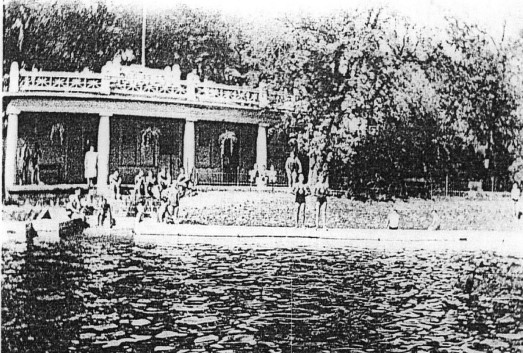
View of Riverside Park pool bathhouse through floodwall
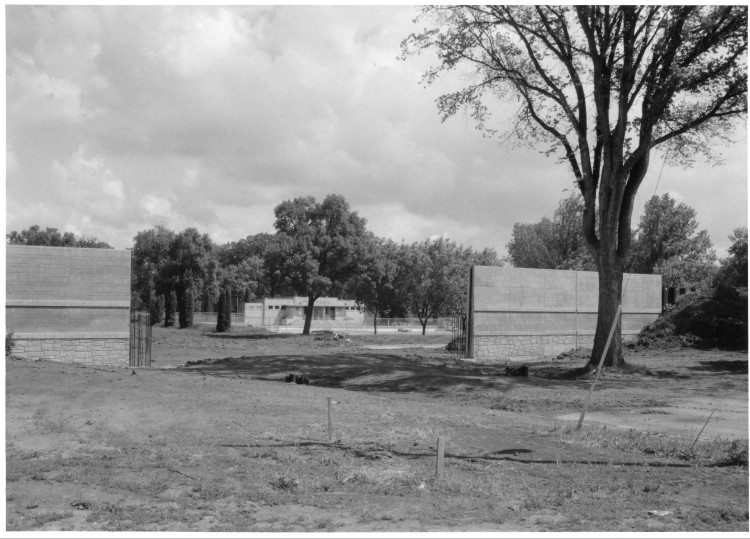
Riverside Park Pool Bathhouse
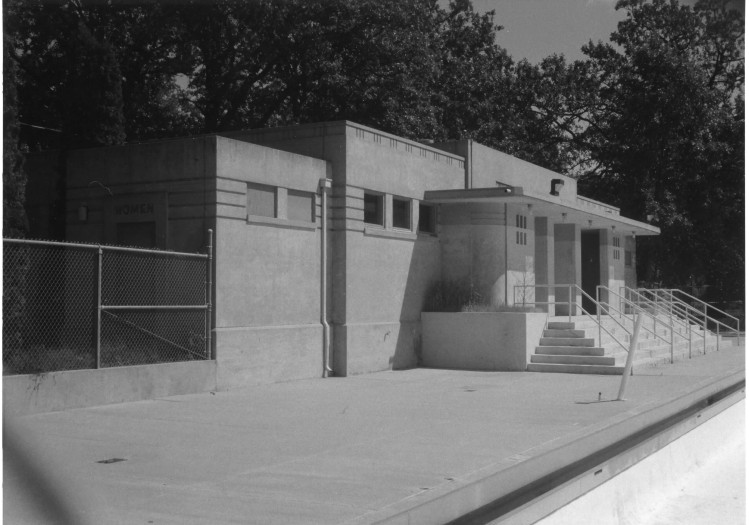
Postcard of Riverside Park
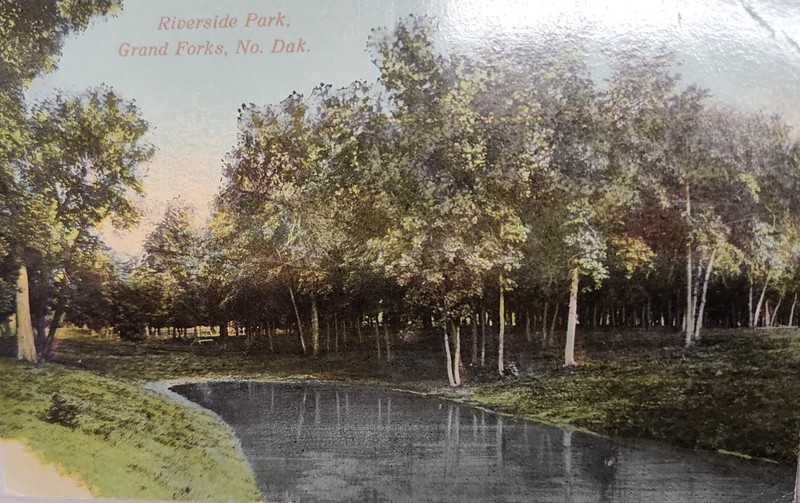
Riverside Park
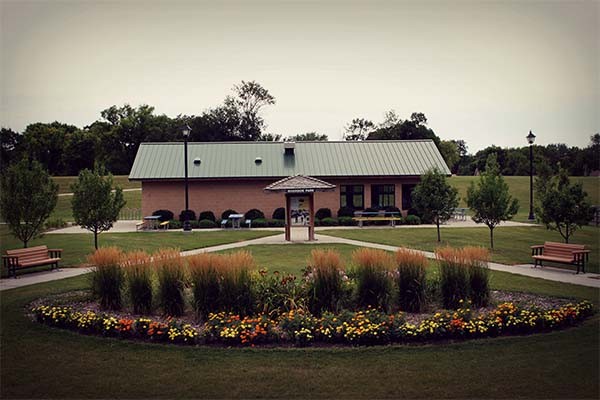
Riverside Park Playground
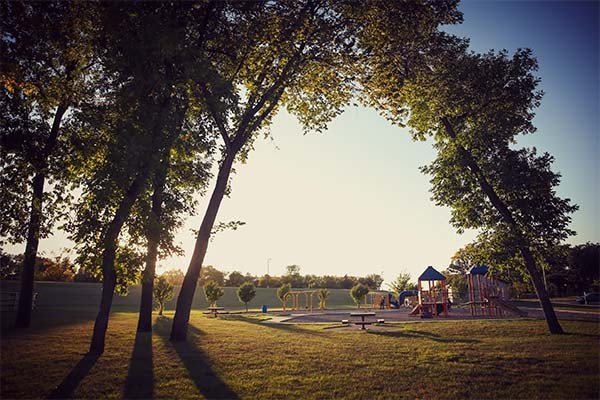
Riverside Park Pool
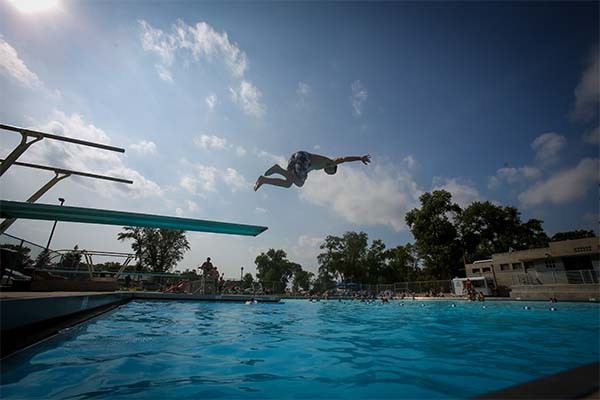
Backstory and Context
Text-to-speech Audio
The city of Grand Forks purchased 36 acres of land for $6,000 from E.J. Lander in 1909. Those 36 acres were originally meant to be used for residential development, or as a possible site for the University of North Dakota, however, the site would eventually become Riverside Park. Before the pool was built in 1911, there was a naturally formed pond that was called “the mudhole” by the locals. In the 1920’s, Riverside Park was used as a tourist campsite. At that time the park included baseball diamonds, tennis courts, a playground, and a pool.
As part of the Works Progress Administration, the Riverside Park pool was replaced with a newer issue, and a bathhouse was also installed. The Riverside Park pool provided relief from the sweltering summer heat for the residents of Grand Forks during the tough years of the Great Depression.
During the historic 1997 flood, Riverside Park along with most of Grand Forks was destroyed. In response to the 1997 flood, the city of Grand Forks constructed a flood wall and levee system to prevent future flooding. The levee sits at a river gauge of 60 feet and is 10 feet across. The 10-foot width of the levee allows the city to add clay to the top of the levee, should the need ever arrive. Riverside Park sits on both sides of the flood protection system. The side that is still susceptible to flooding is referred to as the “wet” side, and the part on the other side of the levee is the “dry” side. The Riverside Park Pool is on the wet side of the flood wall and is constantly at risk of damage during the annual flood season in early spring. City officials in Grand Forks are currently debating whether to continue to provide maintenance to Riverside Pool, as it is on the wet side of the flood wall and is susceptible to flooding.
Riverside Park today continues to be a go-to source for recreation among the citizens of Grand Forks. Today, the park offers several amenities such as tennis courts, a seasonal hockey rink, softball fields, basketball court, restroom facilities, and plenty of parking.
Sources
“National Register of Historic Places continuation sheet.” National Archives and Records Administration, National Archives and Records Administration, 5 Feb. 2007, https://catalog.archives.gov/id/75326511.
(Postcards depicting Riverside Park in Grand Forks, ND) Fred Schneider Papers. OGLMC 1461, Box #1, Folder #25. Elwyn B. Robinson Department of Special Collections, Chester Fritz Library, University of North Dakota, Grand Forks.
Riverside Park and Pool, Visit Greater Grand Forks. Accessed April 27th, 2023. https://www.visitgrandforks.com/directory/riverside-park-pool/.
Pietsch, (1934)
Steve C. Martens, Photo date: 07 June 2006
Steve C. Martens, Photo date: 01 August 2005
Fred Schneider
GFParks.org
GFParks.org
GFParks.org
